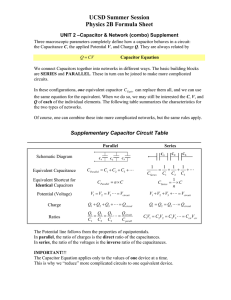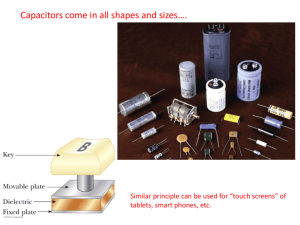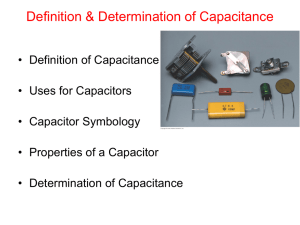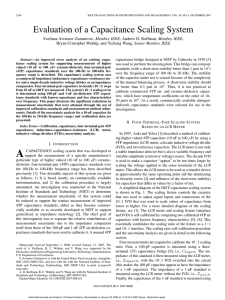1 Quiz 2 solutions are in order of the questions for... (1). Correct answer C
advertisement
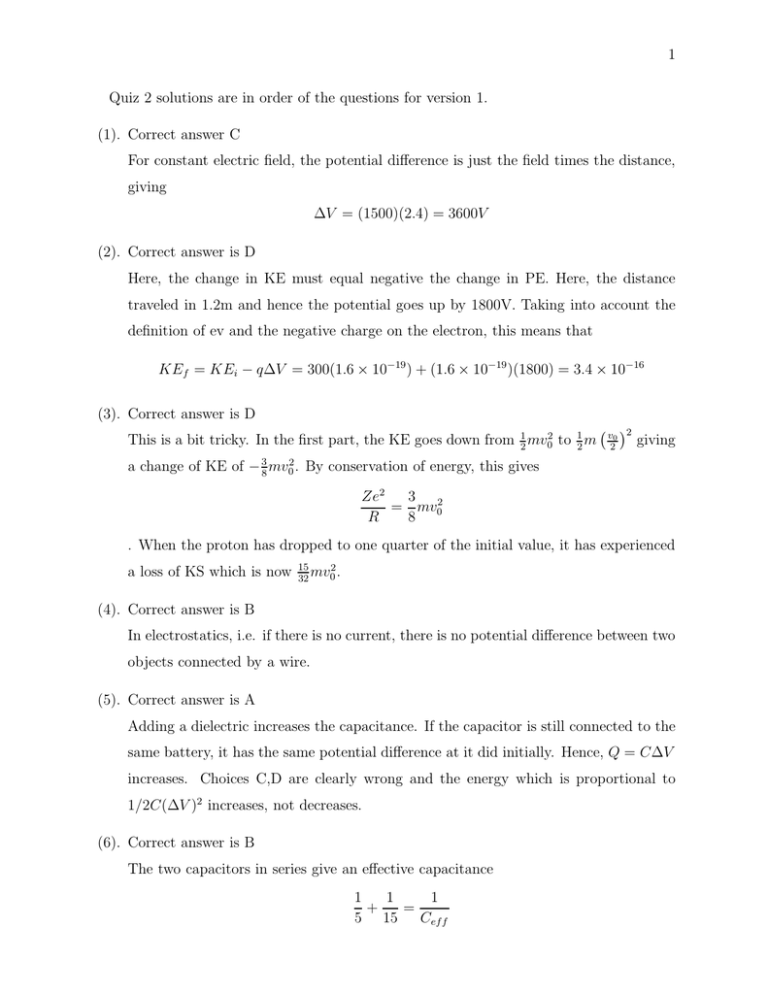
1 Quiz 2 solutions are in order of the questions for version 1. (1). Correct answer C For constant electric field, the potential difference is just the field times the distance, giving ∆V = (1500)(2.4) = 3600V (2). Correct answer is D Here, the change in KE must equal negative the change in PE. Here, the distance traveled in 1.2m and hence the potential goes up by 1800V. Taking into account the definition of ev and the negative charge on the electron, this means that KEf = KEi − q∆V = 300(1.6 × 10−19 ) + (1.6 × 10−19 )(1800) = 3.4 × 10−16 (3). Correct answer is D This is a bit tricky. In the first part, the KE goes down from 21 mv02 to 12 m v0 2 2 giving a change of KE of − 38 mv02 . By conservation of energy, this gives 3 Ze2 = mv02 R 8 . When the proton has dropped to one quarter of the initial value, it has experienced a loss of KS which is now 15 mv02 . 32 (4). Correct answer is B In electrostatics, i.e. if there is no current, there is no potential difference between two objects connected by a wire. (5). Correct answer is A Adding a dielectric increases the capacitance. If the capacitor is still connected to the same battery, it has the same potential difference at it did initially. Hence, Q = C∆V increases. Choices C,D are clearly wrong and the energy which is proportional to 1/2C(∆V )2 increases, not decreases. (6). Correct answer is B The two capacitors in series give an effective capacitance 1 1 1 + = 5 15 Cef f 2 yielding Cef f = 15/4 ≃ 4. This needs to be added to the capacitance in parallel to get 31µF (7). Correct answer is B Two capacitors in series have the same charge. Given a potential difference of 75V across the 5µF capacitor, this charge is Q = C∆V = 375µc. From the overall potential difference of 100, we know that there is a 25V difference across the second capacitor. We can the find C2 = Q = 15µF 25 (8). Correct answer is A We need to use the equation I = nqvd A We are asked about the number of electrons in a wire of length 1m and radius 1 mm. This number is just the area A multiplied by the length (1m) multiplied by the density n. From the above equation nA = 56.5 (1.6 × 10−19 )(4.0 × 10−4 ) ≃ 8.8 × 1027 (9). Correct answer is B The ratios of the two currents will equal the inverse of the ratio of the two resistances. The resistance is proportional to the resistivity and inversely proportional to the crosssectional area. The area goes up by a factor of 4. Hence we get Isilver Rcopper 1.68 × 10−8 = Icopper = 4 × ≃ 13mA Rsilver 1.59 × 10−8 (10). Correct answer is A If we halve the current without changing the device, the power is reduced by a factor of 4.


